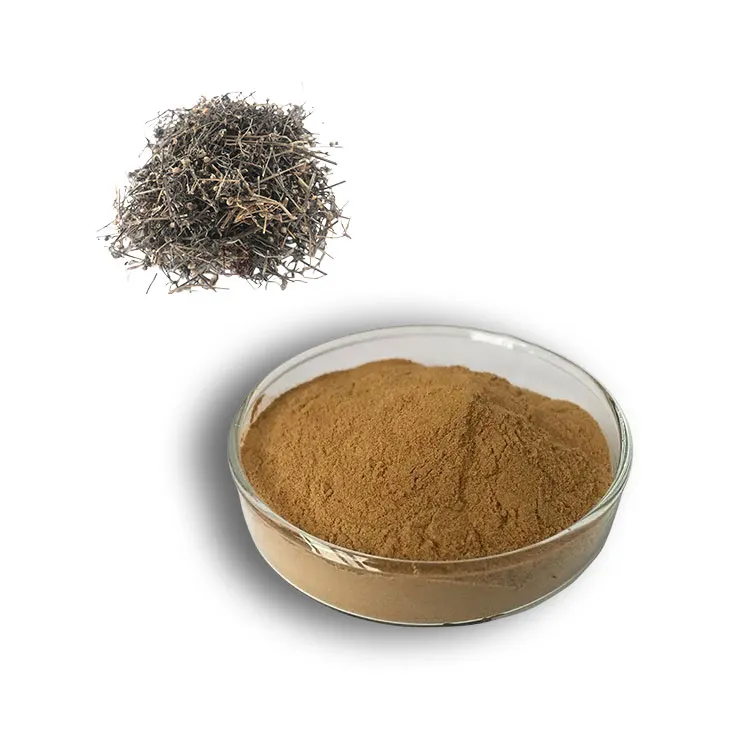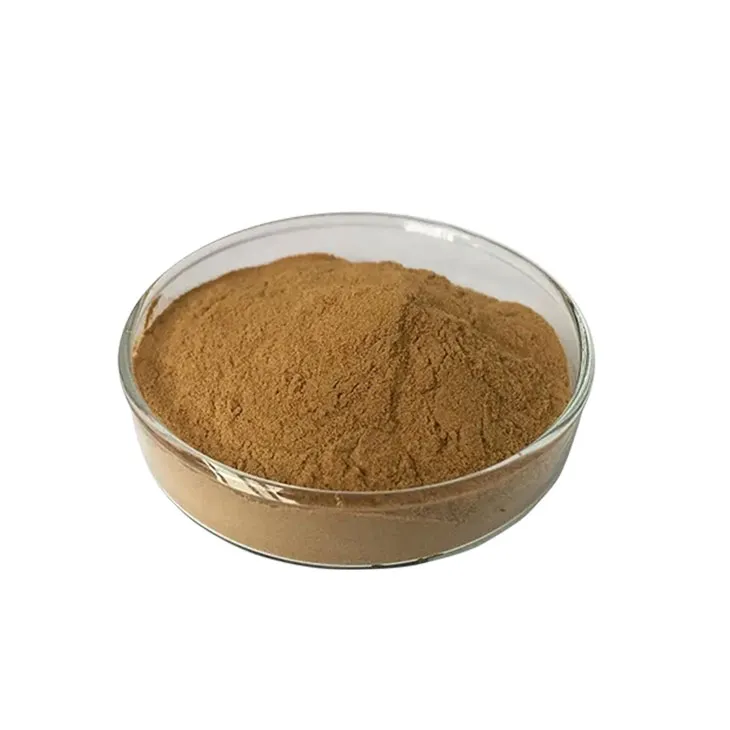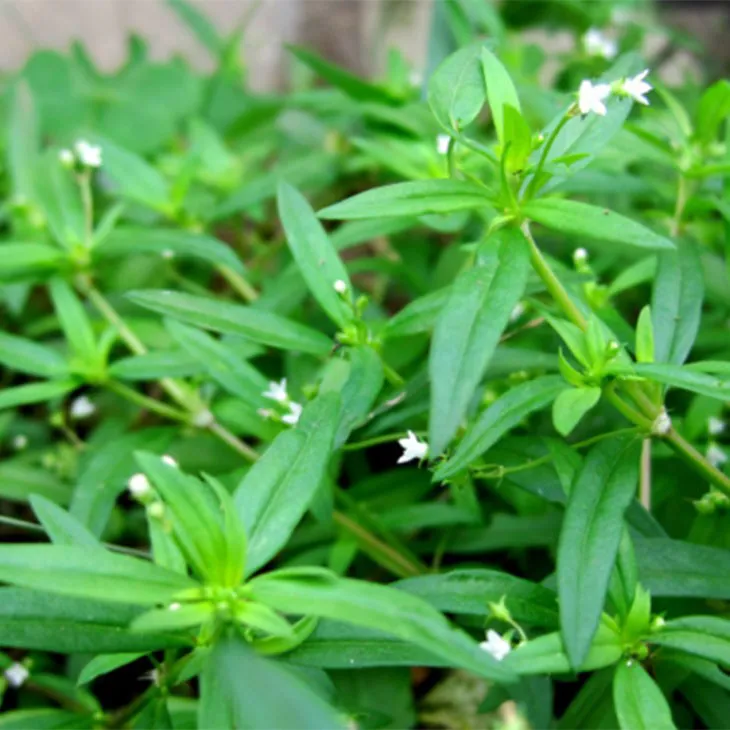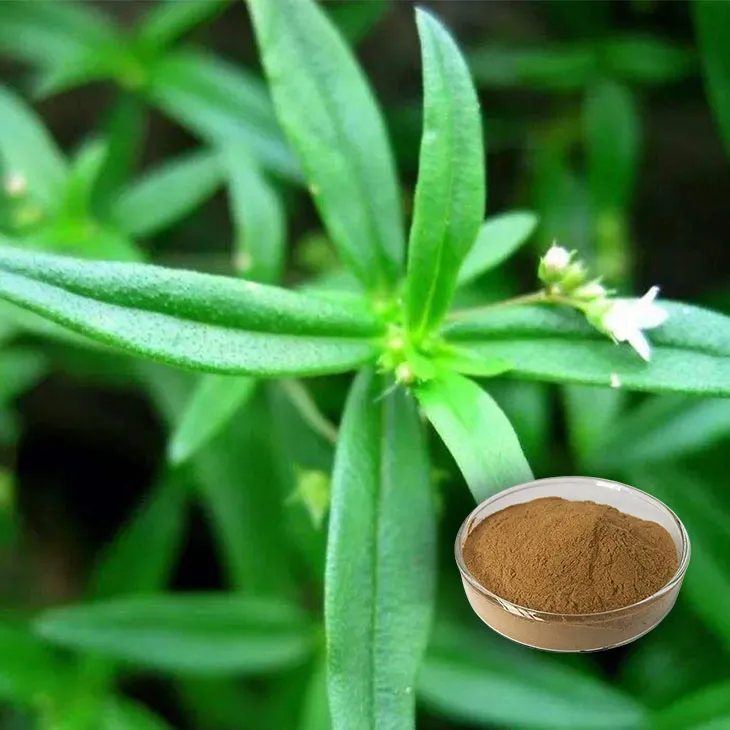- 0086-571-85302990
- sales@greenskybio.com
Organic supercritical CO2 extraction of Hedyotis diffusa extract.
2024-11-30

1. Introduction
The extraction of active compounds from natural sources has always been an area of great interest in various industries such as pharmaceuticals, cosmetics, and food. Hedyotis diffusa, a traditional Chinese medicinal herb, is rich in bioactive components that possess potential therapeutic and functional properties. In recent years, the organic supercritical CO2 extraction method has emerged as an innovative and environmentally - friendly approach for obtaining high - quality extracts from Hedyotis diffusa.

2. Hedyotis diffusa: A Valuable Medicinal Herb
Hedyotis diffusa is widely recognized in traditional Chinese medicine for its various medicinal properties. It contains a wide range of bioactive compounds, including flavonoids, iridoids, triterpenoids, and phenolic acids. These compounds are responsible for its antioxidant, anti - inflammatory, anti - tumor, and antibacterial activities. For example, some flavonoids in Hedyotis diffusa have been shown to scavenge free radicals, thereby protecting cells from oxidative damage.
Moreover, the traditional use of Hedyotis diffusa in treating diseases such as cancer and inflammation has attracted the attention of modern scientific research. Scientists are constantly exploring ways to isolate and utilize these bioactive compounds more effectively for the development of new drugs and health products.

3. Supercritical CO2 Extraction: Principles and Advantages
3.1 Principles
Supercritical CO2 extraction is based on the unique properties of carbon dioxide in its supercritical state. Carbon dioxide becomes supercritical when it is subjected to specific temperature and pressure conditions. Typically, the critical temperature of CO2 is around 31.1 °C, and the critical pressure is about 7.38 MPa. In the supercritical state, CO2 has the characteristics of both gas - like diffusivity and liquid - like solubility. This means that it can penetrate into the matrix of the plant material like a gas and dissolve the target compounds like a liquid.
3.2 Advantages
3.2.1 Environmentally - friendly: One of the major advantages of supercritical CO2 extraction is its environmental friendliness. CO2 is a non - toxic, non - flammable, and naturally occurring gas. It does not leave behind harmful residues in the extract, which is crucial for applications in the food and cosmetic industries where purity and safety are of utmost importance.
3.2.2 Selective Extraction: The supercritical CO2 extraction can be highly selective. By adjusting the temperature, pressure, and the addition of modifiers (such as ethanol in small amounts), it is possible to target specific bioactive compounds in Hedyotis diffusa. This selectivity allows for the isolation of high - purity components without the co - extraction of unwanted substances.
3.2.3 High - Quality Extracts: The extracts obtained by supercritical CO2 extraction are of high quality. Since the extraction process occurs under relatively mild conditions compared to some traditional extraction methods (such as Soxhlet extraction using organic solvents), the bioactivity of the compounds in the extract is well - preserved. The resulting extract also has a better flavor and odor profile, which is beneficial for applications in the food and cosmetic industries.
3.2.4 Easy to Scale - up: Supercritical CO2 extraction is relatively easy to scale - up from laboratory - scale to industrial - scale production. This makes it a viable option for commercial production of Hedyotis Diffusa Extracts for various industries.

4. The Process of Organic Supercritical CO2 Extraction of Hedyotis Diffusa Extract
4.1 Preparation of Raw Material
The first step in the extraction process is the preparation of the Hedyotis diffusa raw material. The plant material is typically dried and ground into a fine powder. This increases the surface area of the material, facilitating better contact with the supercritical CO2 during the extraction process.
4.2 Extraction Parameters
4.2.1 Temperature: The temperature is an important parameter in supercritical CO2 extraction. It is usually set within a certain range to optimize the solubility of the target compounds. For Hedyotis diffusa extraction, a temperature range of 40 - 60 °C is often considered appropriate. Higher temperatures may increase the solubility of some compounds, but it may also lead to the degradation of heat - sensitive components.
4.2.2 Pressure: Pressure also plays a crucial role. A pressure range of 15 - 30 MPa is commonly used for the extraction of Hedyotis diffusa. Increasing the pressure generally enhances the solubility of the bioactive compounds in supercritical CO2. However, excessive pressure may require more energy input and may also affect the selectivity of the extraction.
4.2.3 Modifiers: In some cases, modifiers are added to supercritical CO2 to further improve the solubility of certain polar compounds. Ethanol is a commonly used modifier in the extraction of Hedyotis diffusa. The addition of a small amount of ethanol (usually 5 - 10% by volume) can significantly enhance the extraction efficiency of polar bioactive compounds.
4.3 Separation and Collection of Extract
After the extraction process, the supercritical CO2 containing the dissolved bioactive compounds needs to be separated from the extract. This is usually achieved by reducing the pressure and temperature of the supercritical CO2. As the pressure and temperature decrease, CO2 reverts to its gaseous state, leaving behind the concentrated extract. The extract is then collected for further analysis, purification, and application.

5. Applications of Hedyotis Diffusa Extracts Obtained by Supercritical CO2 Extraction
5.1 Pharmaceutical Industry
In the pharmaceutical industry, the extracts of Hedyotis diffusa obtained by supercritical CO2 extraction have great potential. The bioactive compounds in the extract can be used for the development of new drugs for the treatment of cancer, inflammation, and infectious diseases. For example, some iridoids and flavonoids have shown promising anti - tumor activities in pre - clinical studies. These compounds can be further studied and developed into anti - cancer drugs with fewer side effects compared to traditional chemotherapy drugs.
Moreover, the extracts can also be used in the development of herbal remedies for various health conditions. The ability to preserve the bioactivity of the compounds during extraction makes the supercritical CO2 - extracted Hedyotis diffusa extracts more suitable for pharmaceutical applications.
5.2 Cosmetic Industry
The cosmetic industry can also benefit from the Hedyotis diffusa extracts obtained by supercritical CO2 extraction. The antioxidant and anti - inflammatory properties of the bioactive compounds make the extracts suitable for use in skin - care products. For example, they can be added to creams, lotions, and serums to protect the skin from environmental damage, reduce inflammation, and improve skin complexion.
Additionally, the mild extraction process ensures that the extracts have a pleasant odor and color, which is important for cosmetic products. The high - quality extracts can also enhance the efficacy and marketability of cosmetic products.
5.3 Food Industry
In the food industry, Hedyotis diffusa extracts can be used as natural additives. The antioxidant properties of the extracts can be used to extend the shelf - life of food products. They can also be added to functional foods and beverages to provide health - promoting benefits, such as reducing oxidative stress in the body.
Since the supercritical CO2 extraction method does not leave harmful residues, the extracts are safe for consumption, meeting the strict requirements of the food industry for food additives.
6. Conclusion
The organic supercritical CO2 extraction of Hedyotis diffusa extract is an advanced and promising technique. It combines the advantages of environmental friendliness, high - quality extracts, and selective extraction. The extracts obtained from this method have great potential in the pharmaceutical, cosmetic, and food industries. With further research and development, this extraction method is expected to play an increasingly important role in the utilization of Hedyotis diffusa and other natural resources.
FAQ:
What are the main bioactive compounds in Hedyotis diffusa?
Hedyotis diffusa contains a variety of bioactive compounds such as flavonoids, iridoid glycosides, and phenolic acids. These compounds are responsible for its potential pharmacological activities like antioxidant, anti - inflammatory, and anti - cancer properties.
How does supercritical CO2 extraction work?
Supercritical CO2 extraction works by subjecting CO2 to specific temperature and pressure conditions where it exhibits supercritical fluid properties. In this state, it has both gas - like diffusivity and liquid - like solubility. This allows it to penetrate the plant material (Hedyotis diffusa in this case) and selectively dissolve the bioactive compounds, which can then be separated from the CO2 as the pressure and temperature are adjusted.
What makes supercritical CO2 extraction more environmentally - friendly?
Supercritical CO2 extraction is more environmentally - friendly because CO2 is a non - toxic, non - flammable, and readily available gas. After the extraction process, the CO2 can be easily recycled and reused. Also, compared to traditional extraction methods, it does not use large amounts of organic solvents that are often harmful to the environment and may leave residues in the extract.
What are the potential applications of Hedyotis diffusa extract in the pharmaceutical industry?
In the pharmaceutical industry, the Hedyotis diffusa extract obtained through supercritical CO2 extraction has potential applications due to its bioactive compounds. For example, its antioxidant and anti - inflammatory properties may be useful in developing drugs for treating various diseases related to oxidative stress and inflammation. Some studies also suggest its anti - cancer potential, which could be further explored for cancer treatment or prevention.
How does the extract obtained by supercritical CO2 extraction retain the bioactivity of Hedyotis diffusa?
The supercritical CO2 extraction process is relatively mild compared to some other extraction methods. It operates at specific temperature and pressure conditions that do not cause significant degradation of the bioactive compounds in Hedyotis diffusa. As a result, the extract retains the bioactivity of the original plant.
Related literature
- Supercritical Fluid Extraction of Bioactive Compounds from Medicinal Plants"
- "Advances in Supercritical CO2 Extraction Technology for Herbal Extracts"
- "The Bioactive Compounds and Therapeutic Potential of Hedyotis diffusa"
- ▶ Hesperidin
- ▶ citrus bioflavonoids
- ▶ plant extract
- ▶ lycopene
- ▶ Diosmin
- ▶ Grape seed extract
- ▶ Sea buckthorn Juice Powder
- ▶ Beetroot powder
- ▶ Hops Extract
- ▶ Artichoke Extract
- ▶ Reishi mushroom extract
- ▶ Astaxanthin
- ▶ Green Tea Extract
- ▶ Curcumin Extract
- ▶ Horse Chestnut Extract
- ▶ Other Problems
- ▶ Boswellia Serrata Extract
- ▶ Resveratrol Extract
- ▶ Marigold Extract
- ▶ Grape Leaf Extract
- ▶ blog3
- ▶ blog4
-
Bulk purchase of black pepper extract.
2024-11-30
-
Ginger extract of the best quality.
2024-11-30
-
Wholesale Passion Fruit Extract Suppliers.
2024-11-30
-
Organic Genistein, Australia.
2024-11-30
-
Mulberry Extract
2024-11-30
-
Bitter Melon Extract
2024-11-30
-
Feverfew Extract
2024-11-30
-
Baicalin
2024-11-30
-
Tongkat Ali Extract Powder
2024-11-30
-
Ginger Extract
2024-11-30
-
Sea buckthorn Juice Powder
2024-11-30
-
Echinacea Extract
2024-11-30
-
Elderberry Extract
2024-11-30
-
Horse Chestnut Extract
2024-11-30





















